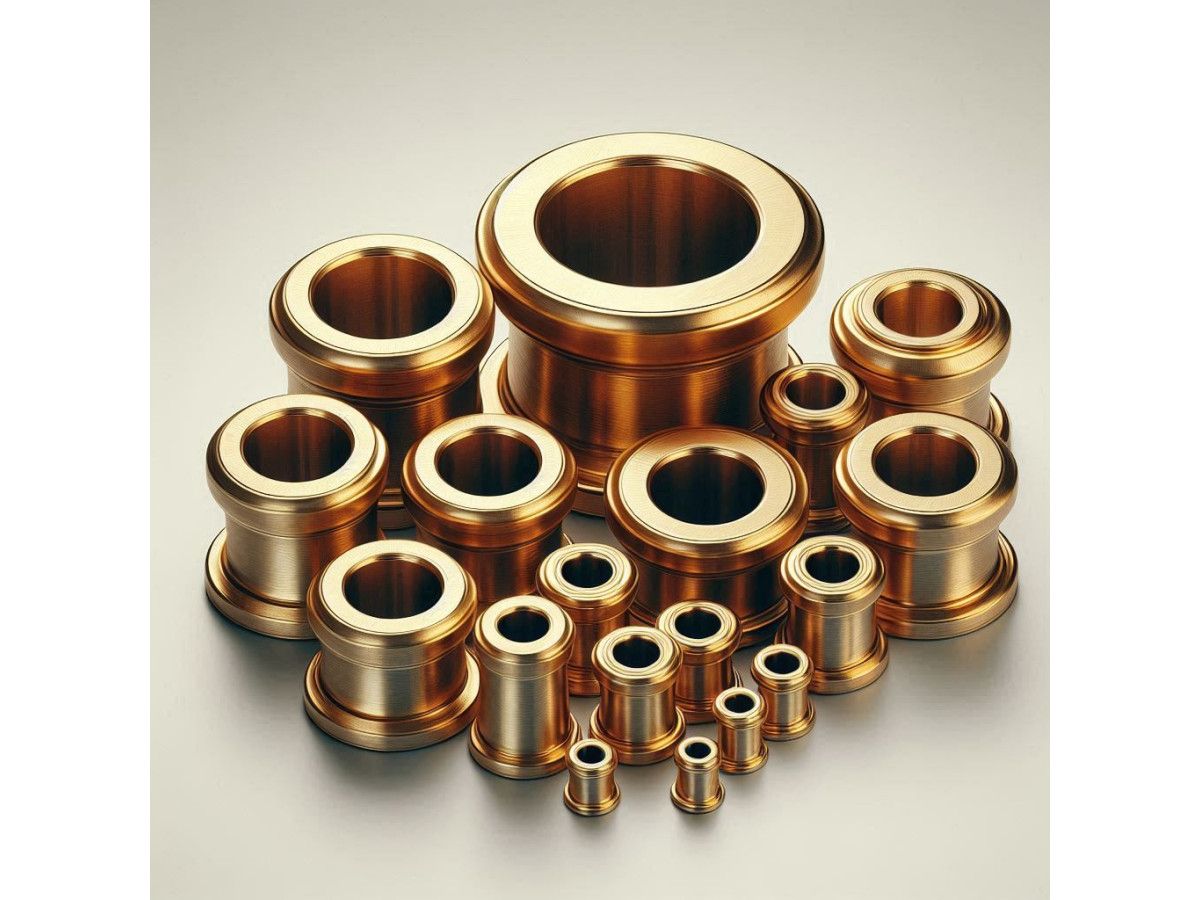Brass alloy bushings are a cylindrical element made of copper and zinc alloy. Due to their structure, they have increased wear resistance, thermal conductivity and antifriction properties. Brass bushings are used where parts rub against each other. For example, in door hinges or in clock mechanisms. They help parts move smoothly and not wear out.
Advantages of choice
Such rolled brass products are an indispensable element in various mechanisms due to a unique combination of properties:
- Increased strength and wear resistance make rolled products suitable for work under high loads.
- Excellent corrosion resistance makes it possible to use brass bushings in aggressive environments, in particular in sea water or chemicals.
- Low friction coefficient guarantees smooth movement of mechanisms and reduces wear of mating parts.
- Good thermal conductivity allows for effective heat dissipation, preventing overheating.
Due to these properties, brass bushings are used in a variety of industries. They are used in bearings, fasteners and many other parts.
What grades are used for manufacturing
The choice of grade directly depends on the operating conditions of the part and the required characteristics. Each has its own unique combination of properties, determined by the percentage of copper and zinc, as well as the presence of alloying additives. The main types of brass used in modern production are:
- L63. One of the most common grades, characterized by good weldability, ductility and oxidation resistance. It is used to manufacture bushings operating under moderate loads and medium aggressiveness of the environment.
- LC40S. It has increased strength and wear resistance compared to L63. It is used to create elements experiencing significant mechanical loads.
- LAZh60-1-1. It has the highest corrosion resistance in sea water. It is used to manufacture brass rolled products operating in conditions of high humidity and a salty environment.
- LS59-1. It has good thermal conductivity and is used to manufacture products used in heat exchange devices.
- LO. It is distinguished by excellent plasticity and ease of processing. It is used to manufacture decorative elements and parts that require a complex shape.
In addition to the listed grades, other alloys can be used to manufacture bushings, for example, LK, LMCS, LS, LC40S, etc. The choice of a specific grade depends on the temperature regime, humidity level, the presence of aggressive environments, and the side of mechanical loads.
Dimensions and characteristics
They can vary widely and depend on the specific application of the part. The main parameters that determine the size of a brass structure are:
- Inner diameter.
- Outer diameter.
- Length.
- Tolerances.
Standard dimensions are usually indicated in millimeters. However, it is possible to manufacture products according to individual dimensions that meet customer requirements. The range of standard dimensions can vary from several millimeters to several tens of centimeters. For example, the inner diameter can be from 2 mm to 100 mm or more, the outer diameter - from 5 mm to 200 mm or more, and the length - from 5 mm to 500 mm or more.
The characteristics of brass alloy bushings are determined by the grade from which they are made. The main ones include:
- Strength - the ability of the material to resist mechanical loads.
- Hardness - the resistance of the product to deformation when a harder body is introduced into it.
- Plasticity - the ability of the material to deform without destruction.
- Impact toughness - the ability of raw materials to resist rapid dynamic impact.
- Corrosion resistance - the level of resistance to the destructive effects of the environment.
- Thermal conductivity - the ability of the material to conduct heat.
- Electrical conductivity - the ability of the bushing to conduct electric current.
The digital values of the characteristics of brass rolled products depend on the grade and can be found in the relevant technical documents, including GOSTs or quality certificates. For example, the tensile strength for L63 brass can be 380-420 MPa, and the Brinell hardness is 80-90 HB. The choice of optimal dimensions and characteristics of a brass bushing depends on the specific application. For example, for bushings operating under high loads, it is necessary to select a material with maximum strength and wear resistance. For bushings operating in aggressive environments, it is necessary to select raw materials with the greatest corrosion resistance.

